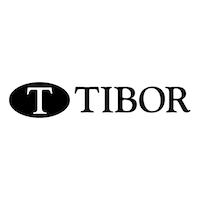I learned some things recently. Some things which I wish I had learned much less painfully and much earlier. I paid attention in Chemistry class but somehow the lesson didn't seem to be quite so important then.
The Boat
 After months of searching, I bought an old square stern aluminum Grumman canoe around ten years ago. The boat was in pretty good shape and, as a bonus, came on a small aluminum trailer.
After months of searching, I bought an old square stern aluminum Grumman canoe around ten years ago. The boat was in pretty good shape and, as a bonus, came on a small aluminum trailer.
Since then, the canoe has been all over Florida, in both salt and fresh water, and is part of many great memories. I've taken it on camping trips to the Everglades. It played a major role in hooking, fighting and leadering a 100+ pound tarpon in the middle Keys. Friends and I have sight fished too many redfish to count, standing carefully on bow and stern seats poling down shorelines and over flats. It is my primary means of getting up and down the St. Johns river during shad season. I recently sold a high-end technical poling skiff with little remorse. This canoe, on the other hand, I will never part with.
Initially the trailer was set up so that the boat would ride top up. This was always a problem since there is no drain and cleaning it out required either taking the canoe off the trailer or lots of bailing.
I used the trailer in its original configuration for a couple years then reworked the it with horizontal bunks so I could flip the canoe over upside down. I was surprised by the amount of corrosion on the bottom of the hull where it had contacted the carpeting on the bunks. As there was nothing I could do to fix it at this point, I chalked the damage up to poor rinsing in an area I could not reach and moved on.
When I bought the canoe the one area that looked like it might eventually need work was the transom. The wood on both sides the inside and outside of the transom, sandwiching the aluminum, had some warping and was a little soft. I remember the previous owner telling me that he had replaced the transom wood a couple of times and that it was a pretty easy process. I mentally filed the information away for future use and went fishing. Based on future events, I now assume that the previously owner used the canoe primarily, or exclusively, in freshwater.
Remember the skiff I mentioned selling? It has been "replaced" it with a SeaArk 1652MVT, a 16' aluminum boat that I'm hoping will require less care and be a better craft for getting my family out on the water. Somewhere in the process I was told that when I picked up a trailer it was essential that the bunks be covered in a solid material to separate the aluminum hull from the pressure treated bunks. I asked some questions.
Basic Chemistry
 One of the primary ingredients in pressure treated wood is copper, in one form or another. It just so happens that copper is very good at pulling electrons away from aluminum causing oxidation of the aluminum. All that is required for this to occur is electric contact, handily provided by carpeting soaked in salt water. The process taking place is galvanic corrosion, which anyone running an outboard motor in saltwater should be familiar with. Outboard motors contain a sacrificial anode which is required in saltwater environments to help control oxidation of your motor. Zinc, aluminum, magnesium and various alloys are used as the anode. They are "sacrificial" in that they give up their electrons and are broken down in order to help protect the metal parts of your motor and boat from corrosion. In this case, galvanic corrosion is a good thing.
One of the primary ingredients in pressure treated wood is copper, in one form or another. It just so happens that copper is very good at pulling electrons away from aluminum causing oxidation of the aluminum. All that is required for this to occur is electric contact, handily provided by carpeting soaked in salt water. The process taking place is galvanic corrosion, which anyone running an outboard motor in saltwater should be familiar with. Outboard motors contain a sacrificial anode which is required in saltwater environments to help control oxidation of your motor. Zinc, aluminum, magnesium and various alloys are used as the anode. They are "sacrificial" in that they give up their electrons and are broken down in order to help protect the metal parts of your motor and boat from corrosion. In this case, galvanic corrosion is a good thing.
What is Galvanic Corrosion?
Galvanic corrosion is defined by Wikipedia as an "...electrochemical process in which one metal corrodes preferentially when it is in electrical contact with another, in the presence of an electrolyte." Different metals have different electrode potentials. When two dissimilar metals are connected by an electrolyte, enabling the movement of electrical current, one will act as the anode (giving up electrons) and one will act as the cathode (gaining these electrons). Pairing together metals with different potential in an electrolyte bath creates a "galvanic cell". This principle is used to make batteries. As this corrosion occurs the metal acting as the anode is broken down and dissolved into the electrolyte while the cathode actually is broken down more slowly that it would be without the presence of the anode.
The anodic index can be used to predict the compatibility of two different metals. This index uses gold as a baseline and is a measure of the electrochemical voltage developed between the material in question and gold. The relative voltage between two dissimilar materials is calculated by subtracting the anodic indices.
Some guidelines are offered to help make good decisions as to which materials can be safely combined under different conditions. In climate-controlled environments the maximum recommended voltage difference is 0.50 V. In “normal” non-controlled environments the recommended difference is 0.25 V. In harsh environments the maximum recommended difference is 0.15 V.
A "harsh environment" is defined as outdoors, with high humidity and salt environments. I'm thinking that dropping your boat in saltwater in Florida probably counts.
The Anodic Index I found for galvanic potential in seawater shows that aluminum has a voltage of -0.76 to -1.0 depending on the alloy. This is a broad range but is as close as I can get without doing a lot more research. Copper, which is a component in pressure treated wood, has a voltage of -0.35. The difference between the two metals is somewhere between .41 and .65. This is really no more than an educated guess since I don't know the exact copper compound used in the pressure treated wood and am not sure I could find it's galvanic potential anyway. Regardless this shows a significant difference that, based on how my canoe stern looks, also exists in real life.
A Rotten Mess
 I had been planning for quite a while to replace the transom boards with cypress. Naturally resistant to rot, cypress boards treated with Thompsons's Water Seal or a similar product (but NOT varnished) should last for years. I was concerned that the boards I planned to remove were treated plywood but hoped I was wrong. The job started off poorly when I found white dust on the first stainless screw I removed and quickly got worse. In the end I found that the aluminum transom is badly corroded with a large portion needing replacement. One of the transom boards was still damp with saltwater, weeks after its last trip to the coast. To make matters worse it looks like some of the hardware used may have been something other than marine grade stainless.
I had been planning for quite a while to replace the transom boards with cypress. Naturally resistant to rot, cypress boards treated with Thompsons's Water Seal or a similar product (but NOT varnished) should last for years. I was concerned that the boards I planned to remove were treated plywood but hoped I was wrong. The job started off poorly when I found white dust on the first stainless screw I removed and quickly got worse. In the end I found that the aluminum transom is badly corroded with a large portion needing replacement. One of the transom boards was still damp with saltwater, weeks after its last trip to the coast. To make matters worse it looks like some of the hardware used may have been something other than marine grade stainless.
I also found some significant corrosion in the bottom of the canoe just in front of the transom. A metal spine running the length of the boat is about half gone. I'm not sure what happened there but my suspicion is that a bronze hook, a galvanized washer or something like this fell down behind the seat and got wedged in a crack under the spine.
Galvanic corrosion needs a few things to progress. The first is two incompatible metals in contact with each other. Another requirement is an electrolytic bath contacting both metals, through which electrons can pass.
My canoe was the perfect setup. The damaged area was made up of a sheet of aluminum to which a piece of copper treated wood was directly attached with incompatible metal hardware. The transom wood was soaked each time the boat was taken out to the saltwater, which was quite regularly. By the time I removed the rotted transom wood it was more like a salt impregnated sponge than a board. The boat was outside but under cover. It didn't receive direct rain but Florida is humid and the morning dew was probably enough to keep the transom wood wet. I don't think it had ever really dried out over the past couple months.
Some Guidelines
Here is a synapsis of what I have learned during this process:
- Consider carefully what you put in contact with aluminum.
- Never allow aluminum to come in contact with treated wood.
- Use aluminum hardware or, more practically, high grade marine stainless. From what I have read 316 aluminum is the best match for aluminum in a marine environment. It is a non-magnetic austenitic chromium-nickel stainless. "Austenitic" refers to the crystalline structure. Unlike the similar 304 steel it also contains up to 3% molybdenum which helps limit corrosion in saltwater environments. 316 stainless steel has a voltage potential of -0.43 to -0.54. If my numbers above on aluminum are correct the voltage difference between the two is from 0.22 to 0.57. The best case is above the minimum guideline for harsh environments. Fortunately, according to an article I found at worldstainless.org (see the link at the bottom), a large difference in potential shows that the risk of galvanic corrosion should be taken into account but not that it will necessarily happen. Looking at real world evidence provides much clearer information.
- 316 stainless has a long history of use on aluminum boats. It sounds like many manufacturers use this particular grade of steel for boats intended for both fresh and saltwater. On an aluminum boat there will be very little steel, in terms of both overall volume and surface area, and a lot of aluminum. The sheer volume of aluminum will limit the potential damage that a few stainless screws and bolts might cause.
- Just because 316 stainless is the "best" match doesn't mean that lesser grades of stainless steel will necessarily cause problems. Hardware store variety stainless steel (most likely 304) is often used on aluminum boats with no apparent ill effects. When given the choice go for the 316 but use something else if you have to.
- Wash your boat down after use in salt water. Without an electrolyte, galvanic corrosion does not occur. Sea water is 50 times as effective an electrolyte as hose water and 10 times as effective as brackish water. Make sure you rinse out the bilge and anywhere else where water could pool. This is often not practical but allowing your boat to dry out will also help.
- Do NOT use any lubricant containing graphite as it can contribute to galvanic corrosion. I believe this is because the graphite mixed with chloride (i.e. salt) acts as a particularly effective electrolyte.
- If using dissimilar metals, painting or otherwise coating both the aluminum and the stainless hardware will help limit corrosion. If you plan to only coat one then coat the hardware (the cathode). A small uncoated portion of anode (aluminum) touching an uncoated cathode (hardware) will result in significant corrosion at the limited open spot(s) on the anode. All the damage will be confined to a small area where the corrosion may be significant. On the other hand, any damage resulting in a gap in coverage on the cathode will be spread out over the large area of the uncoated aluminum. I may coat the new hardware on my canoe once it is repaired or otherwise separate it from the aluminum. On my new aluminum SeaArk I will most likely just use uncoated 316 steel screws where necessary. There are already stainless screws on other parts of the boat that are not coated. The few screws I will be adding are unlikely to make much difference and I probably wouldn't gain much from the extra effort.
- Consider installing an anode on a bare aluminum surface somewhere on the hull below the waterline. For my SeaArk, I plan to have an aluminum plate that sticks out a couple inches from the hull welded to the transom just below the waterline. It will be left unpainted and the anode will be bolted directly to it. For boats used in both fresh and saltwater, an anode made from aluminum alloy, manufactured to be more reactive than high grade aluminum, will likely be the best option. Magnesium is a good choice if your boat will be used in fresh water only but do not ever use it in salt or brackish water. It is so reactive that in saltwater the extra electrons can actually cause damage to your hull due to "overprotection." Zinc is the least reactive option and is suitable for use in saltwater. It will provide limited protection in brackish water and will be of very little help, if any, in a freshwater environment. A sacrificial anode is much more important if the boat will be left in the water. If you plan to install an anode do some further research to determine which material to use, how large the anode should be and where it should be installed.
- Replace sacrificial anodes regularly. They should not be allowed to degrade past half their original size.
- Keep your anodes free from any coating. This includes not only paint but any protective sprays. Don't douse your anodes with a corrosion inhibitor when you coat the engine and expect the anodes to continue working efficiently! Also, if an anode shows a layer of corrosion on the outside, clean it off so the fresh interior metal is exposed.
- Be very careful about what you drop on the deck or in the bilge. A copper penny, bronze hook or bottle cap that makes its way into the bilge could cause significant damage in a relatively short time.
The Repair
 I am writing this a few months after finishing the earlier part of the post. The fix to my canoe transom entailed sandwiching the corroded aluminum between thick aluminum sheets cut to shape. After cleaning off the corrosion and coating both sides of the transom liberally with silicone sealant the pieces were bolted together, using stainless hardware, through the original transom. The person I had complete the repair had access to some starboard. He installed this on either side of the transom in place of the cypress I had planned for. It's a little slippery but the motor locks in just below two bolts that protrude on the inside of the transom and is not coming off. The new transom is probably more durable than the original and looks good as well.
I am writing this a few months after finishing the earlier part of the post. The fix to my canoe transom entailed sandwiching the corroded aluminum between thick aluminum sheets cut to shape. After cleaning off the corrosion and coating both sides of the transom liberally with silicone sealant the pieces were bolted together, using stainless hardware, through the original transom. The person I had complete the repair had access to some starboard. He installed this on either side of the transom in place of the cypress I had planned for. It's a little slippery but the motor locks in just below two bolts that protrude on the inside of the transom and is not coming off. The new transom is probably more durable than the original and looks good as well.
In the end this is a valuable lesson and nowhere near as expensive as it could have been. And the whole topic is actually pretty interesting. I will certainly be much more careful in the future and more intentional about what I put on or near my metal boats. Hopefully this article catches you before you experience any problems with galvanic corrosion. If not, I hope it is a good introduction to the problem and helps you move towards a fix.
Sources used and further reading
Explanation of galvanic corrosion:- http://www.worldstainless.org/Files/issf/non-image-files/PDF/Euro_Inox/Contact_with_Other_EN.pdf
- https://en.m.wikipedia.org/wiki/Galvanic_corrosion















Comments